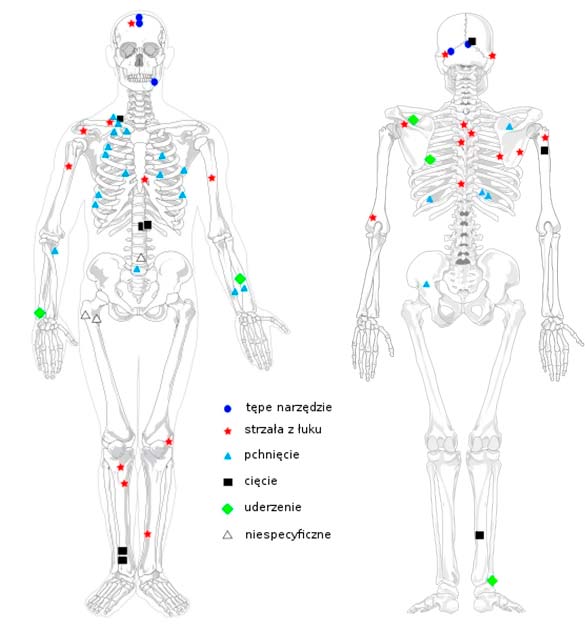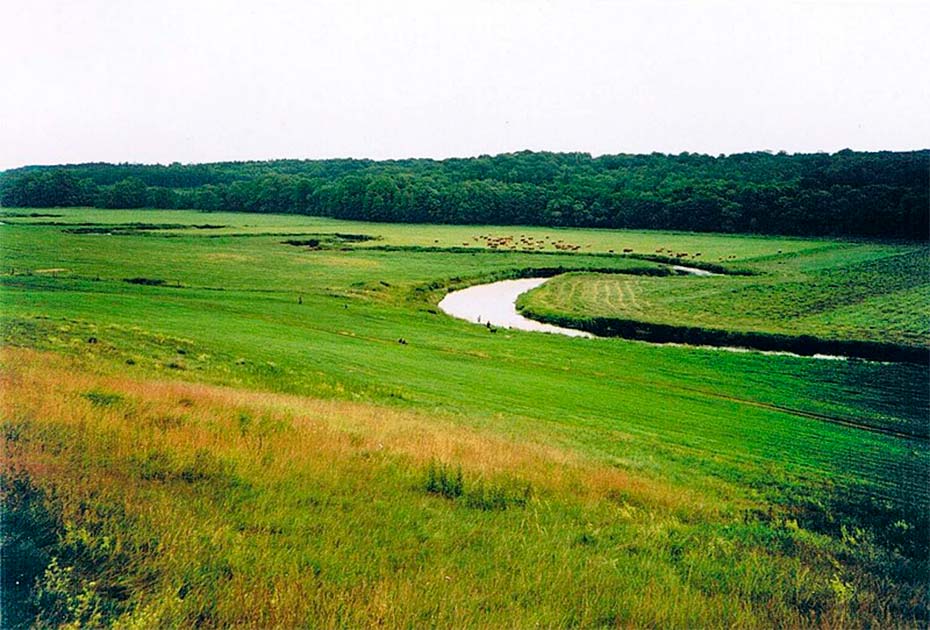Europe is a continent scarred by warfare. From the tribal destruction of the Bronze Age, through to the infighting of medieval and Renaissance Europe and the utter destruction wrought by two world wars, this smallest continent is a patchwork of battlefields.
In fact, its warfare can be traced all the way back into myth. In the valley of Tollense in Germany, we can even find what is thought to be the remains of Europe’s first ever battle.
Bronze Age Warfare
The archeological discoveries in Tollense valley in Mecklenburg, northeast Germany have been dated to the 13th century BC. The size and date of the site suggest that a serious conflict occurred in the European Middle Bronze Age.
Many weapons and other artifacts, along with the bones of perhaps 140 individuals and thousands of other bones fragments have been found here. These bones are scarred and shattered, these were clearly the victims of violence.
Extrapolating from the finds at the site, archaeologists believe there might have been 3,000 to 7,000 participants who joined this battle. About 3200 years ago, two great armies clashed at a riverside crossing near the Baltic Sea.
The confrontation can’t be found in any history books; all we have is the archaeology. In this battle, thousands of warriors came together and fought using flint, wood, bronze, and metal weapons, the pinnacle of military technology for the time.
At this part of the Tollense Valley, the river meanders through flat marshland as it makes its way through north Germany towards the Baltic Sea. Evidence of fighting on both banks along the river has been found, the armies clashing hand to hand using spears, swords, knives, clubs, and bronze and flint-tipped arrows.

The battle was ferocious, leaving hundreds dead on the valley floor. Some of the bodies were stripped of their valuables & left bobbing in the shallow ponds. Some of the bodies sank to the bottom, and today bones can be found on top of bones. But who fought the battle, and why is a mystery.
So far the remains of 140 individuals and, interestingly, five horses have been identified. Taking this into account, almost 750 bodies are expected to lie in the soft soils of the riverbanks. Of the almost 4,000 people who fought there, it is expected that almost one in five participants were killed and left.
- Were There Any Victors at the Battle of Clontarf?
- (In Pics) Seven Civilizations lost in the Bronze Age Collapse
Nor was this some rag-tag militia, pressed into service and sent to their deaths. These were warriors, and their use of shields, body armor, helmets, and corselets would have required training. The men who died at Tollense were fearsome fighters, who cut each other down in the largest battle in Bronze Age European history.
More Questions than Answers
The Tollense Valley Battle tells us much about European Bronze Age warrior culture. In 1200 BC, the two groups that clashed along the river were well trained, well armed, some were mounted and all were warriors. After the battle, hundreds of people were left to decompose around the river’s edge.
When archaeologists discovered the site between 2009 and 2015, they discovered flint arrowheads embedded in the horse and human remains. The weapons used were primarily from the Bronze Age, but stone age technology was still deemed useful.
Archeologists analyzed the situation by carrying out the procedure known as isotope analysis. They used the chemical composition of the victim’s teeth to check out where they came from.
The result showed that most warriors who died here were not local. They came here from hundreds of miles away, and chose this place for battle. Most of the bodies or remaining bones were of young men, and there was a wide variety of weaponry and personal belongings found there.
These warriors wore bronze jewelry and wielded expensive bronze weapons. They were rich and trained for fighting, a distinct warrior class. And yet they were abandoned after their death, lost in the marshes of the Tollense.
Over 10,000 human bone fragments were found at that site, which is considered the largest number of bones in that region. It offers outstanding materials for comparison and research purposes.
Here the archeologists found a series of bronze weapons, knives, lances and many more things. The team also found that a few wooden clubs were used for the battle. The weapons may have been expensive, but there was no consistent arming of the warriors: each appears to have carried whatever he chose to use.

Only 10% of the battle site has been excavated. The bodies on the battle site were accessible and have been thoroughly looted in the past.
- Alesia! The Lost Battle and the Roman Conquest of Gaul
- The Arslantepe Mound of Turkey: The First Swords
Furthermore, the bronze has long since eroded away, with only the patina and distinctive residue remaining. Only a few gold rings, which the warriors might have worn in their hair, have been recovered.
Tentative Answers
Researchers have begun to piece together the fight after a protracted sequence of digs from 2009 to 2015. Throughout the Bronze Age, Northern Europe was seen as a backwater, overshadowed by more established civilizations in the Near East and Greece. Bronze itself took 1,000 years to come here after being produced in the Near East.
But, Tollense’s scale shows that there is more organization and violence than previously assumed. “We had imagined raid scenarios, with small teams of young men killing and stealing food, but to picture such a large war with thousands of people is startling,” according to Svend Hansen, head of the DAI’s Eurasia Department in Berlin.
The well-preserved bones and artifacts show that our views of Europe as unsophisticated may be wrong. Here we see a trained warrior class, the implication being that individuals from all across Europe joined the deadly conflict. They gathered at Tollense for a great battle.
“When it comes to the Bronze Age, we’ve been missing a smoking gun, where we have a battlefield and dead people and weapons altogether,” explains University College Dublin (UCD) archaeologist Barry Molloy.
Isotopes of another element, nitrogen, which reflect nutrition, provide further information. Nitrogen isotopes in some men’s teeth imply they ate a diet high in millet, a grain more widespread in southern Europe than in northern Europe at the period.

They weren’t mere farmer-soldiers, who fought every few years. They were skilled warriors. Much more might be revealed by ancient DNA; when compared to other Bronze Age samples from throughout Europe at the time, it might indicate the warriors’ homelands and features like eye and hair color.
Although the genetic investigation is still in its early stages, it corroborates the idea of distant origins. DNA from teeth reveals that some soldiers are connected to present southern Europeans, while others are related to people living in Poland and Scandinavia today.
Why did these warriors gather in northern Germany? Why did they fight and die there? It seems that only more research can provide the answers.
Top Image: The armies that fought at the battle of Tollense were made up of trained and well-armed soldiers. Source: Zef Art / Adobe Stock.
By Bipin Dimri